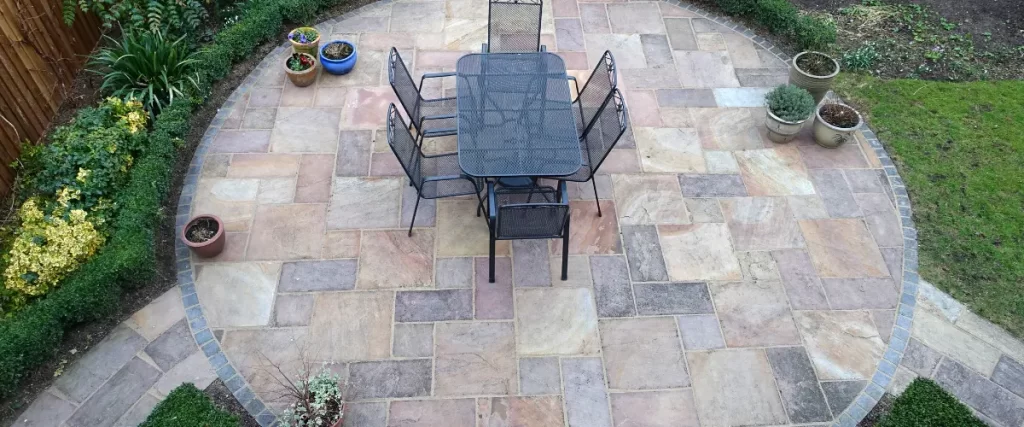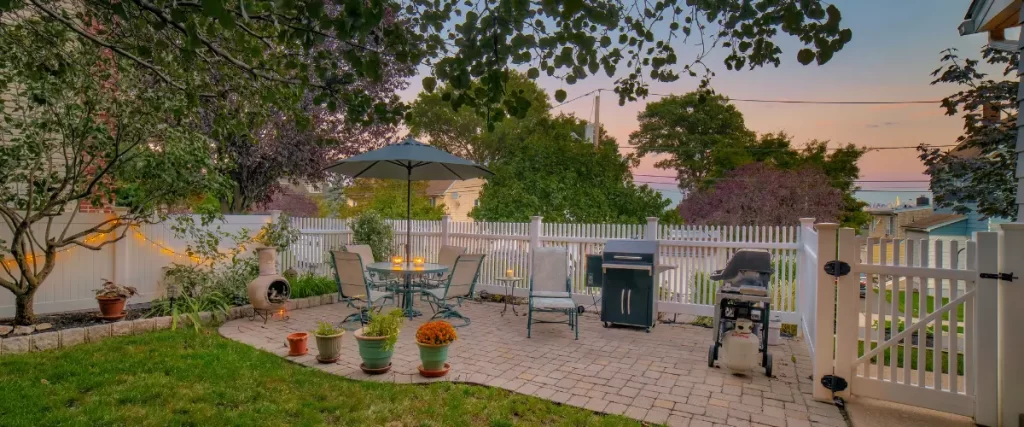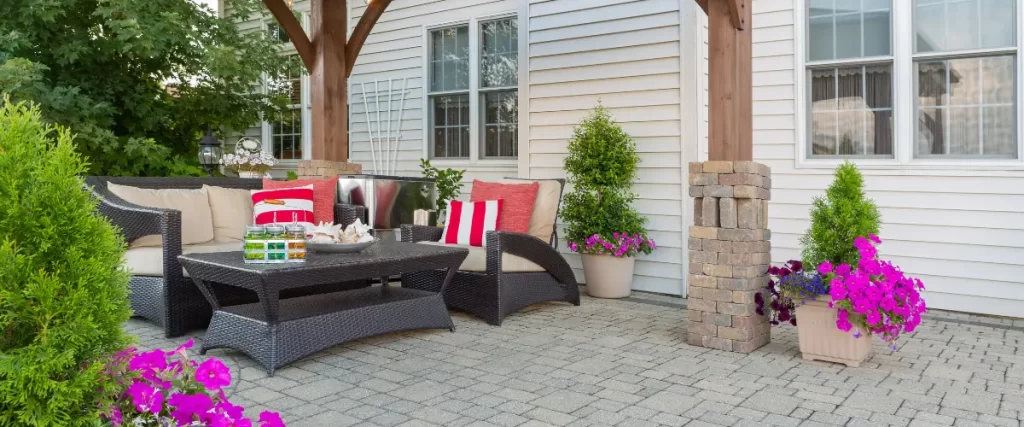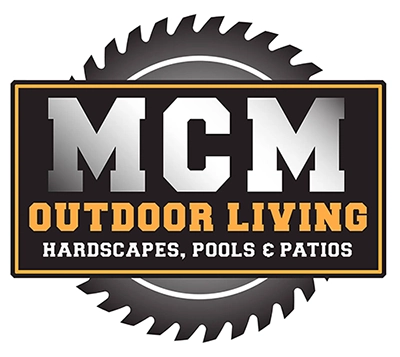If you’ve ever looked out over your Plano backyard and dreamed of the perfect paver patio—sleek lines, cozy seating, maybe a fire pit for those crisp Texas nights—you’re not alone. Outdoor living is huge in North Texas.
But if you’re laying that patio over our infamous clay soil and not doing it the right way? You could be in for some trouble down the road. Cracks. Uneven surfaces. Shifting pavers that ruin the vibe, and the value of your investment.
Let’s break it all down so you know exactly what you’re dealing with and how to make sure your dream patio actually stays dreamy. North Texas clay soil has a reputation, and for good reason. But with the right knowledge, you can work with it, not against it.

Why North Texas Clay Soil Is a Big Deal for Paver Patios
Plano and much of Collin County sit on expansive clay soils—think heavy, sticky, and super reactive to moisture. When it rains, this soil swells up like a sponge. When it’s dry (which it often is), it shrinks and cracks. This constant expand-contract cycle wreaks havoc on anything built on top of it. Foundations, sidewalks, driveways, and yes—your patio.
Key characteristics of our local soil:
High shrink-swell potential: It moves—a lot.
Moisture sensitive: Swells during rainy seasons, shrinks in drought.
Poor drainage: It tends to hold water rather than let it pass through.
Common in Plano: Especially in neighborhoods near Oak Point Park, Legacy West, and the 75 corridor.
How Clay Soil Impacts Paver Patios Specifically
You might be thinking: Aren’t pavers more flexible than concrete? And you’d be right—they are! But that doesn’t mean they’re immune to soil movement. Here’s how Plano’s soil can sabotage your patio if it’s not installed correctly:
1. Uneven Surfaces and Trip Hazards
As the ground shifts, individual pavers can rise or sink, leading to a patio that looks like a rollercoaster. Not only does this kill the look, but it’s also a serious safety concern—especially if you’ve got kids, elderly family members, or just like walking barefoot with your coffee on Saturday mornings.
2. Drainage Issues
Clay soil already drains poorly. If your patio design doesn’t account for that, you’ll end up with standing water that seeps under your pavers, softens the base, and leads to sinking and shifting.
3. Weeds and Gaps
As pavers move and gaps open up, weeds can sneak in. Once they’re there, they’re tough to get out without damaging the surface.
4. Edge Restraint Failures
In unstable soil like ours, even the strongest edge restraints can loosen without proper preparation and reinforcement.
What Plano Homeowners Can Do to Combat These Problems
The good news? You’re not helpless here. There are proven techniques that make a huge difference when installing pavers over clay soil.
1. Excavate Deeper Than Normal
In most areas, 4–6 inches of base might be enough. But in Plano? Go deeper—often 8–12 inches—to remove unstable topsoil and create room for a stronger foundation.
2. Use Geotextile Fabric
This fabric gets laid between the soil and the base layer. It prevents mixing, adds strength, and helps stabilize the patio long-term.
3. Install a Proper Base
Crushed concrete or limestone aggregate compacted in multiple layers provides the solid, well-drained base clay soil can’t offer on its own.
4. Add Drainage Solutions
French drains, channel drains, or just a properly pitched patio surface can make all the difference in keeping water away from the foundation.
5. Edge Restraints with Stakes
Edge restraints should be locked down with long spikes that go deep into the ground to prevent lateral shifting.
Seasonal Maintenance: Keeping Your Patio in Top Shape
Even with perfect installation, Plano’s soil and weather will still test your patio. So here’s how you stay ahead of the game:
Inspect for movement every spring and fall.
Reapply polymeric sand between pavers every 1–2 years to keep gaps sealed.
Check drainage paths after heavy rains—especially around pool decks or sloped yards.
Avoid heavy water near the edges—like leaky sprinklers or gutter outlets dumping water onto the patio.

The Role of Local Climate and Watering Habits
Plano’s climate is no joke—hot summers, erratic rain, and those occasional freeze-thaw cycles. But what really accelerates soil movement is inconsistent moisture levels. For example:
Overwatering flower beds near patios can cause localized swelling.
Going weeks without water in dry seasons can lead to deep soil cracking and settling.
Sudden heavy rains after a drought can shock the soil, creating rapid expansion.
Smart landscaping and proper irrigation can help you keep moisture levels more consistent and protect your patio in the process.
Common Mistakes Homeowners Make (And How to Avoid Them)
Let’s call these the “wish-I-knew-before” moments:
Thinking concrete sand is fine for the base. (Use crushed aggregate.)
Skipping the geotextile layer. (Big stability issue.)
Letting the patio drain toward the house. (Yikes—always slope away from structures.)
Assuming all paver installers understand clay soil. (They don’t.)
Best Paver Manufacturers for Clay Soil Installations
Choosing high-quality pavers can also help ensure your patio stays strong and stunning.
Here are some of the top paver brands that hold up well in Plano’s climate and soil conditions:
Belgard – Known for durable, weather-resistant pavers that perform well with shifting soils.
Unilock – Offers advanced manufacturing technology and beautiful styles that are perfect for residential patios.
Pavestone – Headquartered in Texas, their pavers are engineered with local climates in mind.
Techo-Bloc – Offers high-density pavers that resist cracking and hold up well in freeze-thaw cycles.
Basalite – Affordable and long-lasting paver options with a variety of colors and styles.
Frequently Asked Questions (FAQs)
How deep should a paver base be in North Texas clay soil?
In Plano’s clay soil, you’ll want a minimum of 8–12 inches for your base—more than the national average—to ensure stability.
Do I need to worry about drainage if I’m using permeable pavers?
Absolutely. Permeable pavers help, but you still need a drainage plan to deal with North Texas’s heavy clay and unpredictable rainfall.
Can I DIY my own paver patio in Plano?
You can, but it’s risky if you’re not familiar with clay soil behavior. A poorly prepared base can lead to serious long-term issues.
Is sealing the pavers necessary?
Not required, but highly recommended. Sealing can help with stain resistance, weed prevention, and maintaining color.
Final Thoughts: Clay Soil Isn’t the Enemy—Poor Planning Is
Living in Plano means you’ll have to deal with clay soil whether you’re ready or not. But if you plan properly, use the right materials, and follow the best practices tailored to our region, your paver patio can look amazing and last for decades.
Don’t let soil be the reason your dream patio turns into a maintenance nightmare. Give it the foundation it deserves—and enjoy every square inch.

Ready to Build a Patio That Lasts in Plano’s Clay Soil?
We’d love to help you do it right from the ground up. Contact us at (469) 583-6213 and let’s talk about how to make your patio beautiful, durable, and tailored for North Texas living
